14 kinds of granular soil for growing flowers, each with different characteristics, how to prepare them is a science
Original Flower Paradise
For flower cultivation, no matter you are a novice or an expert, the most basic issue that cannot be avoided is not only watering, fertilization, and environment, but also soil. Everyone knows that if you want to grow potted flowers, choosing the right gardening medium or even preparing the medium is a basic skill. Of course, homemade gardening soil can be accumulated through experience. With more practice, you can naturally master the preparation ratio suitable for different potted plants. But before that, shouldn’t we first understand what common gardening media are? After all, many people have never seen qualified garden soil except for the nutrient soil sold online.
Because different plants have different requirements for the proportion of soil medium preparation, I will take clematis as an example to briefly introduce 14 common gardening media. Some of them are suitable for succulents, and some are suitable for orchids. However, as long as the proportions are appropriate, common potted plants can use them.
Clematis has fleshy roots, and a medium with good air permeability is the key to the healthy growth of the plant. If you have other potted plants at home, please refer to the characteristics of these media and try to prepare them yourself. More than 5,000 words have been written just to briefly introduce these 14 media. This article is only for an introductory understanding. The detailed usage of each medium and the introduction of suitable plants will be introduced in separate articles later. Please understand.
1. What are the 14 common gardening media?
Below is a table of contents I made for the article to facilitate your understanding and reading. You can jump directly to the part you are interested in.

2. Understand the formation, characteristics and usage of these 14 types of gardening media
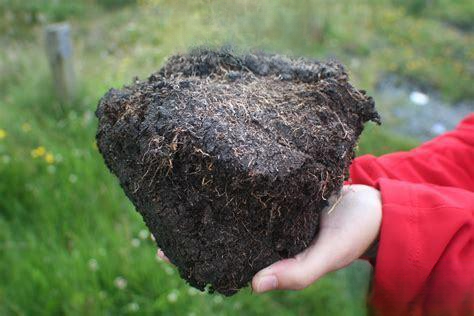
1. Peat soil
How is peat soil formed?
Peat is a product of swamp formation. The main source of peat is peat moss or sphagnum, but other organic matter such as dead swamp plants and even dead animals and insects may also be the source of peat.
What are the properties of peat soil?
Peat contains organic matter and humus, is very light, has good air permeability, strong water and fertilizer retention capacity, is slightly acidic, and generally does not contain pathogens or insect eggs; it contains fewer nutrients and is difficult to absorb water after drying. It is often divided into two categories: white peat and black peat. The peat composition in different regions varies greatly. Imported peat is better than Northeast peat. However, peat is a non-renewable resource. From the perspective of environmental resource protection, it is not recommended to use it. Of course, many people are using it, and many businesses are selling it. It is not illegal, and you don't have to worry about it if you use it.
How to use peat soil?
For clematis, peat is the basic medium for potted clematis, and potted plants generally use 10~25mm specifications. Northeast peat is particularly acidic and is not recommended for clematis planting. Other acid-loving plants can try it.
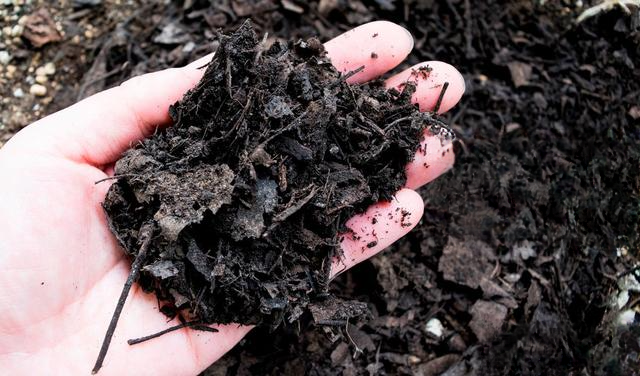
Leaf mold
2. Leaf mold
How is leaf mold formed?
Leaf mold is soil formed by the decomposition of leaves of trees and shrubs by fungi. This type of soil is usually formed because it is too dry, acidic, or low in nitrogen to be decomposed by bacteria.
What are the characteristics of leaf mold?
Leaf mold is light in texture, rich in humus, has good fertility, is permeable and breathable, and can improve the medium. It is slightly acidic and can be made by garden compost.
How to make your own leaf mold?
Because fallen leaves contain a very high proportion of carbon-rich substances such as lignin and cellulose (generally accounting for more than 70% of the total weight), the process of their natural decomposition into leaf mold is very slow.
The simplest way to make your own leaf mold for home gardening is to store the collected leaves in plastic bags (leaves with a high degree of pollution, such as those on the roadside, should not be used), and then open them and use them after one to two years. If the amount is large, you can consider building a wooden frame or a one-square-meter container with bricks, and cover the collected fallen leaves with canvas or other things.
The whole process takes about one to two years to turn fallen leaves into nutrient-rich humus. When completed, it will emit a reminiscent fragrance like an ancient forest. Although the proportion of nitrogen, phosphorus and potassium in leaf humus is low, it has a high proportion of organic matter, making it an ideal soil conditioner or mulch.
If you want to speed up the decomposition, you can also use a lawn mower to break up the leaves first, add an appropriate amount of water and stir it every week. Some studies have also shown that adding freshly cut weeds can speed up the decomposition process. The ideal conditions are to keep it moist, at a temperature of about 60°C and stir it properly.
How to use leaf mold?
Taking Clematis as an example, leaf mold is an optional medium for planting Clematis. It has a high acidity, so the recommended usage is no more than 30% of the total volume. For other potted plants, please refer to it.
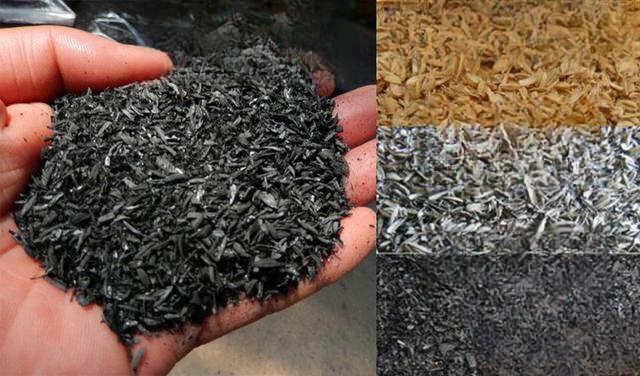
Tanishuku
3. Rice husk charcoal (rice charcoal)
How is husk charcoal formed?
Rice husk, also known as rice husk, is the outer layer of rice. Rice husk charcoal, as the name suggests, is carbonized rice husk.
What are the characteristics of rice husk charcoal?
It has a light texture, good air permeability and drainage, and can be used to increase the alkalinity of the medium.
Rice husk charcoal is very useful for improving the soil for seedlings, gardening, fruit trees and vegetable gardens. Almost all of the 15 trace elements necessary for rice fields are present in rice husk waste slag. Although this charcoal is not a fertilizer in nature, it helps to promote the growth and prosperity of crops. Proper use of this charcoal can make potted plants grow better.
How to use rice husk charcoal to grow flowers?
Taking Clematis as an example, rice husk charcoal is one of the must-have granular media for growing Clematis, and the usage is generally 5%~10%. The main function is to adjust the alkalinity of the medium, and Clematis prefers alkaline medium. Other potted plants can refer to it.
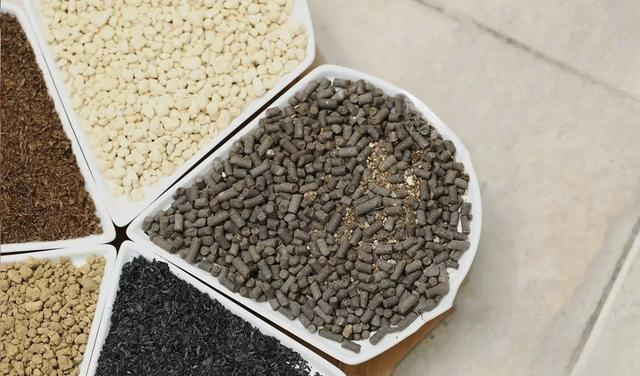
Alice Granular Soil
4. Alice Granular Soil
Where does Alice granular soil come from?
This is a relatively well-known gardening brand in Japan. Because it is a processed medium, it has added certain fertility and nutrition.
What are the characteristics of Alice granular soil?
First of all, we need to understand that the purpose of using granular soil is to increase the ventilation and air permeability of the potting soil. Because there are gaps between the particles, air can flow through them, allowing the roots of potted plants to breathe smoothly, thereby increasing the water absorption rate of the roots and allowing the plants to grow rapidly and vigorously.
Iris granular soil has good water retention, drainage and air permeability, and is rich in minerals and appropriate fertilizers.
How to use IRIS granular soil?
Because Alice granular soil contains vermiculite, the vermiculite can be screened out before use in plastic pots in the Yangtze River Delta region, while ceramic pots and those in the northern region can be used directly.
Taking Clematis as an example, Alice granular soil is an optional basic medium for planting Clematis. It is mostly used for flower and bulb specifications, and the usage is generally 20%~50%.
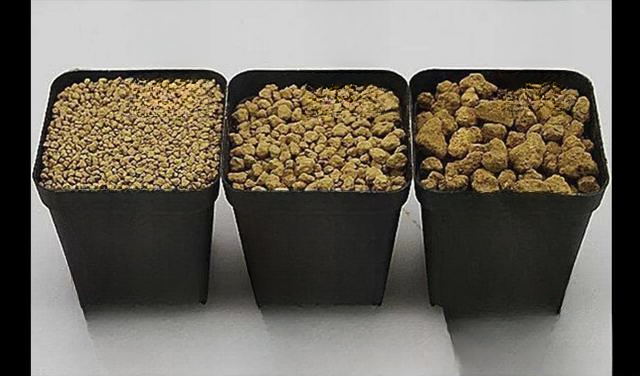
5. Akadama soil
How is Akadama formed?
Akadama is a kind of granular soil, formed by the accumulation of volcanic ash, and is one of the most widely used soil media. It is a kind of highly permeable volcanic mud, dark red or yellow granular, without harmful bacteria, slightly acidic pH value, and its shape is conducive to water storage and drainage. It is the most commonly used type of stone particles in gardening, suitable for various plant pots, and can be called "universal soil". It is widely used for succulent plants.
What are the properties of Akadama?
Akadama contains a certain amount of phosphorus and potassium fertilizers. Highly permeable volcanic mud, no harmful bacteria, slightly acidic pH value. Its shape is conducive to water storage and drainage, suitable for all kinds of high-end potted plants. A medium commonly used in Japanese gardening, there are even cases where people have successfully grown plants with pure Akadama. It is excellent as a cutting medium and planting medium.
How to use Akadama soil?
Generally, we use it as a paving surface. The color of Akadama soil can be used to judge whether the water inside the flowerpot is dry. Akadama soil is yellow when dry, and it becomes a dark reddish brown after absorbing water. It is easy to judge the soil moisture. Akadama soil will also become powdery over time. Akadama soil does not need to be used with other planting materials. It can be used directly. This is what we often call pure Akadama soil for planting succulents. Whether it is planted alone or mixed with soil, it is a good choice.
Taking Clematis as an example, it is one of the optional granular media for planting Clematis, generally using a diameter of 3~6mm.
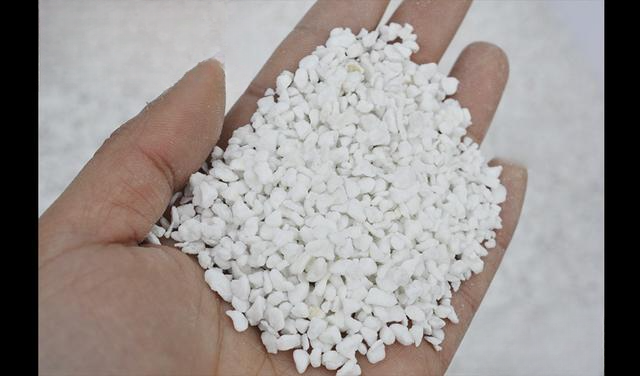
6. Perlite
How is perlite formed?
Horticultural perlite is a white granular material with a honeycomb structure inside, which is made by preheating perlite ore and then calcining it at high temperature to expand it.
What are the characteristics of perlite?
Perlite is light in texture, has good drainage and air permeability, and generally does not decompose, but tends to float to the surface of the soil when watering. It contains a small amount of fluorine, which may harm some plants. Perlite is cheap and is a granular medium with a high cost performance.
How to use perlite?
Because of its light texture and easy floating and flying, it is rarely used on large seedlings. It is generally used for potting small seedlings.
Taking Clematis as an example, it is one of the granular media that can be selected for planting Clematis, and generally uses a diameter of 3~6mm.
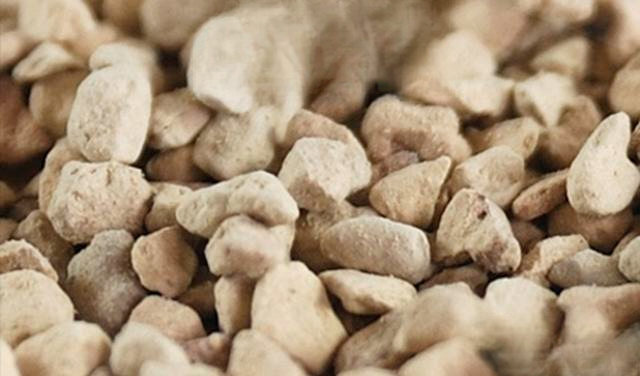
Diatomaceous earth (5-10 mm)
7. Diatomaceous earth
How is diatomaceous earth formed?
Diatomaceous earth is a biogenic siliceous sedimentary rock composed mainly of the remains of ancient diatoms.
What are the properties of diatomaceous earth?
Porous particles have good stability and can reduce the density of the medium, loosen the medium, reduce compaction, and facilitate air penetration, circulation and flow of plant roots. It is often used for succulents, especially for paving succulents. Diatomaceous earth is an excellent matrix additive, and its water absorption and water retention properties are better than vermiculite and perlite.
How to use diatomaceous earth?
Taking clematis as an example, it is a kind of granular medium that is dispensable for growing clematis. Generally, a small amount of diatomaceous earth with a diameter of 1~3mm will be used as the medium for flower pots larger than 30cm, which acts like coarse sand.
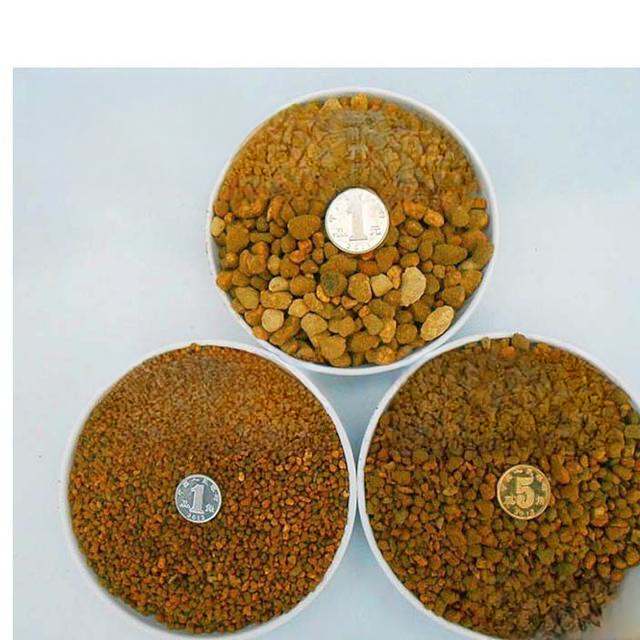
Kiryu Sand
8. Kiryu Sand
How is Kiryu sand formed?
Kiryu sand is a volcanic sand named after the Kiriyu area in Japan. It contains a lot of iron oxide, is heavier (heavier than Akadama soil), and is yellowish red in color. It is hard and sandy, and is also good for paving. Although Kiryu sand has sand in it, it is different from river sand. If you pinch it, some dirt will fall off the surface. After all, it is produced by volcanoes, unlike river sand that has been washed by water for a long time.
What are the characteristics of Kiryu sand?
It has good permeability, water storage, circulation and drainage. Mixing with Akadama soil can improve the drainage of cultivation. It is not easy to break, and is suitable for plants that are not suitable for repotting or do not need to be repotted.
How to use Kiryu sand?
Take clematis as an example. It is one of the optional granular media for planting clematis. Generally, the diameter is 3~6mm. The price of Kiryu sand is about 70 yuan for 16L, which is a little more expensive than Akadama soil and Kanuma soil. Because Kiryu sand is hard and not easy to crush, it is suitable for plants that do not like to repot or do not need to repot. Mixing with other granular soil can improve the drainage of the cultivation soil.
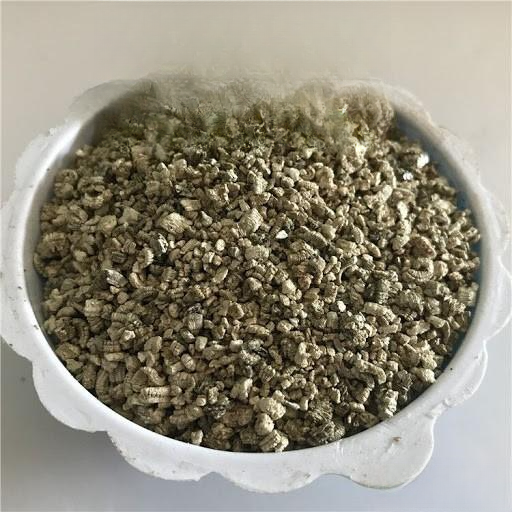
9. Vermiculite
How is vermiculite formed?
Vermiculite is a natural, inorganic, non-toxic mineral that expands under high temperature. It is a relatively rare mineral and belongs to silicate. Its crystal structure is monoclinic, and its appearance looks very similar to mica. Vermiculite is produced when certain granites are hydrated. It is usually produced at the same time as asbestos. Because vermiculite has the ability of ion exchange, it has a great effect on soil nutrition.
What are the properties of vermiculite?
Vermiculite is light in texture, and has good water and fertilizer retention and air permeability. It does not contain nutrients, is brittle, and is easily broken. It is not suitable for mixing with other media. Long-term use will cause poor air permeability and drainage. It is generally only used for cuttings. In dry areas in the north, planting media can be added to improve the water retention of the media.
How to use vermiculite?
Taking Clematis as an example, vermiculite is basically not used in Clematis planting. However, vermiculite is a very good cutting medium. Cuttings can be made with a diameter of 1~3mm or 3~6mm. Cutting efficiency is higher after mixing with Akadama soil. The simplest way to use vermiculite in succulent soil is to mix it with peat soil in a ratio of 1:2 (peat soil: vermiculite) and directly use it for succulent planting. White vermiculite can be used directly for rooting succulents without adding other media.
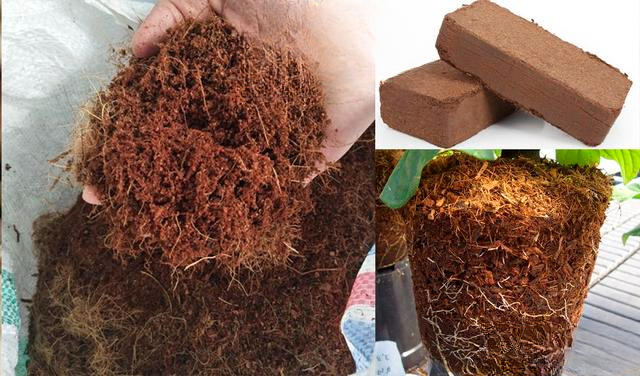
10. Coconut bran
How is coconut bran formed?
Coconut peat is the fiber powder of coconut shell. After processing, coconut peat is very suitable for growing plants and is a popular gardening medium. It is one of the natural organic mediums for soilless cultivation. It can be used for soilless cultivation of flowers and economical plant products, as well as for the cultivation of seedlings and seedlings.
What are the characteristics of coconut bran?
Coconut bran is cheap and a renewable resource. It can be added to the medium to improve water permeability. However, since it has no fertility and does not contain trace elements, it is not recommended to use it in large proportions. The recommended proportion of perennial plants should not exceed 15%.
How is Coco Peat Used in Gardening?
Taking clematis as an example, coconut bran can be used for planting clematis, with the proportion of small seedlings not exceeding 30% and large seedlings not exceeding 15%. Coconut bran has a high salt content, and whether the desalination is thorough will affect the growth of the plant. When purchasing and using coconut bran, you should pay attention to the salinity EC (try to buy branded goods, the manufacturer has already carried out desalination treatment). When there is a lot of coconut bran in the potting medium, it is recommended to use a perforated flower pot, and when watering, the water should flow out from the bottom of the flower pot to take away the inorganic salts in the coconut bran.
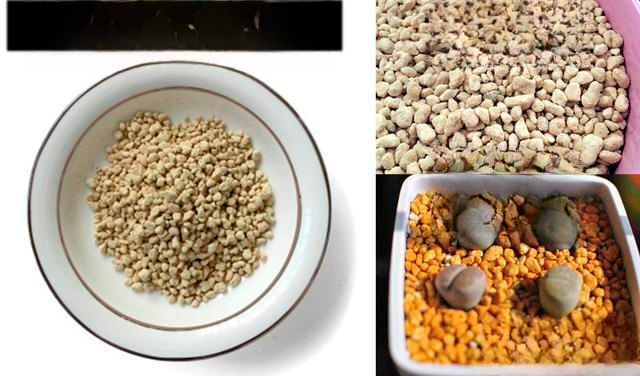
11. Kanuma clay
How was Kanuma soil formed?
Kanuma soil is the general name for pumice produced in Kanuma City, Tochigi Prefecture, Japan.
What are the characteristics of Kanuma soil?
It is usually round and porous. It has high permeability, water storage capacity and ventilation, good water retention, no harmful bacteria, and strong acidity. It is usually used for the cultivation of plants such as azaleas. Kanuma soil is probably the most acidic of all common granular soils.
How is Kanuma soil used in gardening?
Kanuma soil is acidic, so unless you have some plants that particularly like acidity, there is no need to use Kanuma soil on a regular basis. Akadama soil should be used as the main soil.
Kanuma soil has better drainage and is not as good at retaining water as Akadama soil.
Taking Clematis as an example, one of the optional granular media for planting Clematis is generally 3~6mm in diameter.
Notice:
Normally, Akadama soil is generally used, and there is no need to use Kanuma soil specifically. Kanuma soil is used for plants that prefer acidic soil, such as azaleas and blueberries. In addition, Kanuma soil has better drainage than Akadama soil, so if drainage needs to be strengthened, you can also add an appropriate amount of Kanuma soil. When Kanuma soil is dry, its color is weak yellow and a little white, but once it is watered, it becomes golden. Kanuma soil in this state is called the most beautiful paving soil.
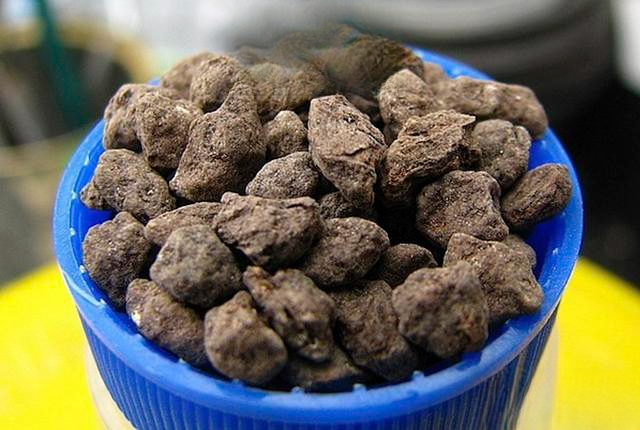
Fairy soil (put in the cap of a mineral water bottle, size for reference)
12. Fairyland
How was the fairyland formed?
"Fairy soil" comes from natural soil, that is, soil that has not been damaged by humans. It is a natural culture medium for plants, especially orchids and potted plants.
What are the characteristics of fairy soil?
The texture is very similar to Akadama soil, but the color is darker and the nitrogen content is much higher than Akadama soil, so the fertility of fairy soil is quite good.
How to use fairy soil?
Generally, fairy soil is packaged in a double layer of a silk bag inside a plastic bag, which is tightly sealed. Therefore, fresh fairy soil is relatively moist and only needs to be soaked in water for 24 hours to be soaked thoroughly. The fairy soil must be soaked thoroughly before use, otherwise its rich nutrients cannot be released and orchid roots cannot be absorbed.
The standard for measuring whether the fairy soil is soaked thoroughly: separate the soaked fairy soil by hand to see if there is water in the innermost layer. If not, continue soaking. When about 80% of the fairy soil is soaked thoroughly, it can be used. If the fairy soil is not used after being soaked thoroughly, you can pour out the water and seal the packaging bag, and use it whenever you want.
Fairy soil seems to be very famous among flower lovers with a long history of green plants such as lotus, orchid, etc. Many people also use fairy soil to make water grass mud or reduce the acidity of fish tank water.
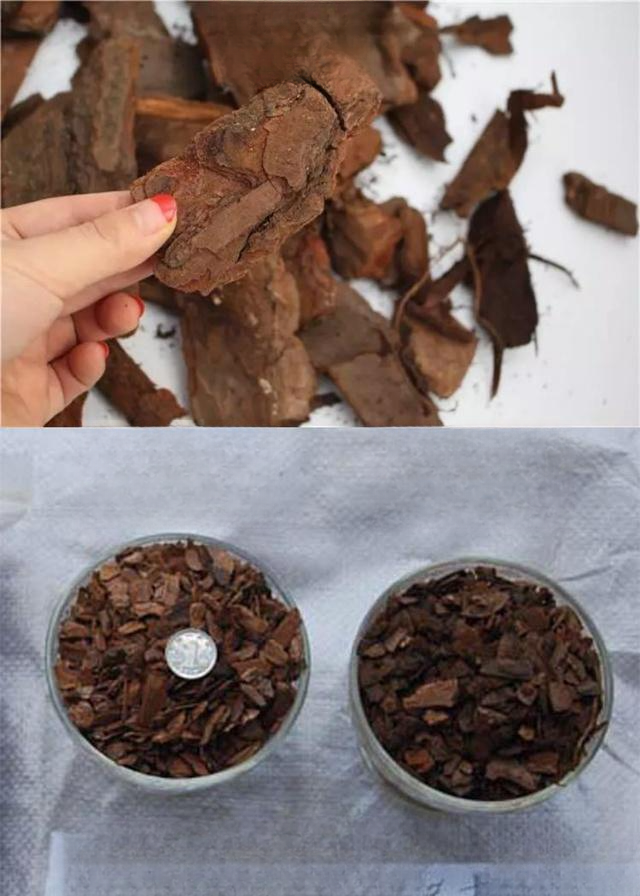
Pine Phosphate
13. Pine Phosphate
How are pine scales formed?
Pine phosphorus sounds mysterious, but it is actually processed pine bark. It is usually processed through processes such as composting, crushing (grinding), grading, and fumigation.
What are the characteristics of pine phosphorus?
Pine scales have good air permeability, water retention, heat preservation, light texture, acidity, and contain organic matter. Pine scales have stable physical properties and decompose slowly. They are suitable for full mixing with heavy sticky garden soil to improve soil permeability and drainage, which is conducive to the healthy growth of plants.
How to use pine phosphorus?
Because pine phosphorus has too much organic matter and is easy to rot, it must be fermented before it can be used as a cultivation medium. It is generally used for roses. It is not recommended to use too much in humid and rainy areas. If the flowers are paved with pine phosphorus, it can suppress weeds.
Taking Clematis as an example, it is not recommended to use pine phosphide as a medium.
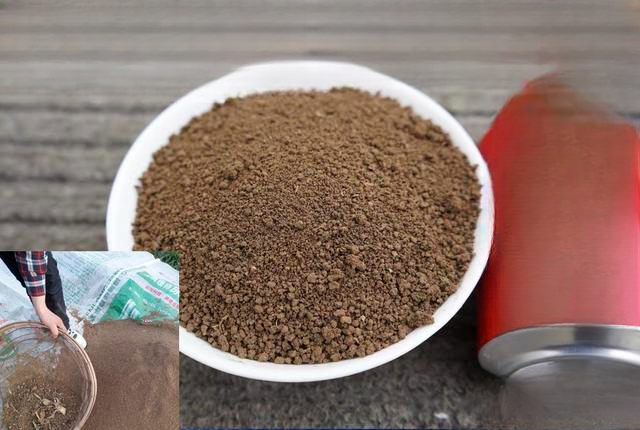
14. Garden Soil
How is garden soil formed?
Garden soil, also known as vegetable garden soil and farmland soil, is ordinary cultivation soil. Due to frequent fertilization and cultivation, it has high fertility and good aggregate structure. It is one of the main raw materials for preparing culture soil.
What are the properties of garden soil?
Due to frequent tillage and fertilization, qualified garden soil has high fertility and good aggregate structure. It is easy to compact when lacking water and has poor air permeability when wet; it may carry pathogens and insect eggs. Qualified garden soil is difficult to obtain in cities.
How to use garden soil?
Because garden soil has poor air permeability and drainage and is easily compacted, most potted plants are mixed with other media except for ground planting.
Taking clematis as an example, it is not recommended to use garden soil whether it is potted or planted in the ground.
Below is a visual comparison of the particle sizes of several commonly used media, please refer to it.
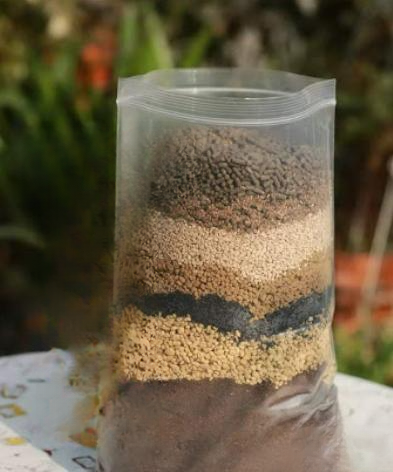
(III) Preparation ratio of potting medium (taking Clematis as an example)
1. Recommended medium ratio for seedlings within one year:
7 parts of peat, 0.5 parts of rice husk charcoal, 1 part of Akadama soil, 1.5 parts of perlite. (Perlite can be replaced by coconut bran)
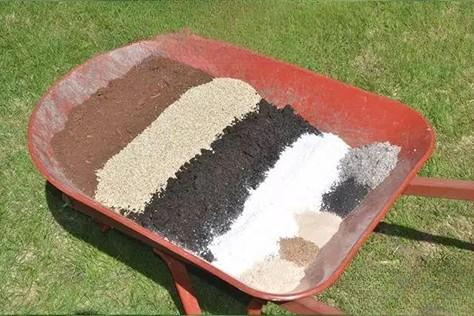
2. Recommended medium ratio for plants planted for more than two years:
Simple version of media ratio:
6 parts peat, 1 part rice husk charcoal, and 3 parts perlite.
Upgraded media ratio:
6 parts of peat, 1 part of rice husk charcoal, 2 parts of Kanuma soil, 1 part of Akadama soil (Kanuma soil can be replaced by Kiryu sand or granular diatomaceous earth)
Super strong version media ratio:
4 parts of peat, 2 parts of Alice granular soil (used directly), 1 part of rice husk charcoal, 2 parts of Kanuma soil, and 1 part of Akadama soil. (Alice granular soil can be replaced by leaf mold, and Kanuma soil can be replaced by Kiryu sand or granular diatomaceous earth)
Lazy version of media ratio:
5 parts of peat, 4 parts of Iris granular soil (screened out vermiculite), and 1 part of rice husk charcoal.
If you don’t have or don’t want to use peat soil, you can use leaf mold and coconut coir instead.
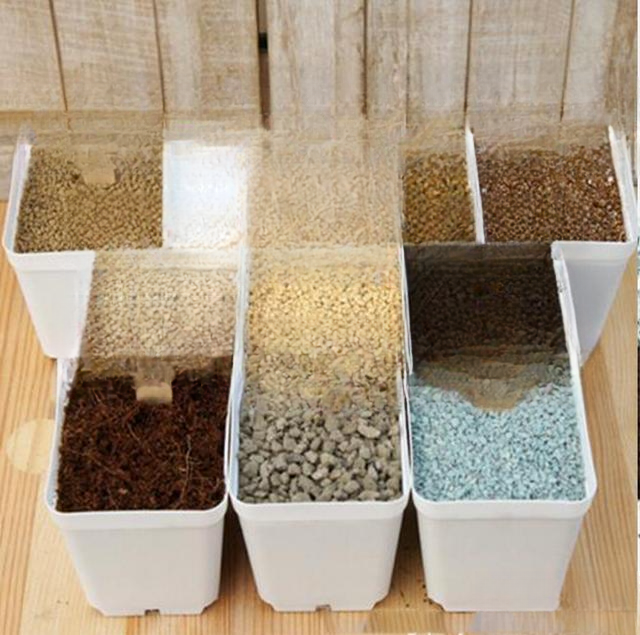
Gardening medium is the basis for growing flowers and plants, but the ratio of any medium does not need to be textbook-like and rigorous. After all, everyone lives in a different environment. The ratio of the medium, the ventilation of the environment, the sunshine time, watering and fertilization all affect the growth of the plant. Therefore, the preparation of the medium should be operated according to the specific environment. No matter how good the medium prepared by others is, it may not be suitable for you. So read more, understand more, think more, and try more until you can do it easily. All the temptations are for the final glance.